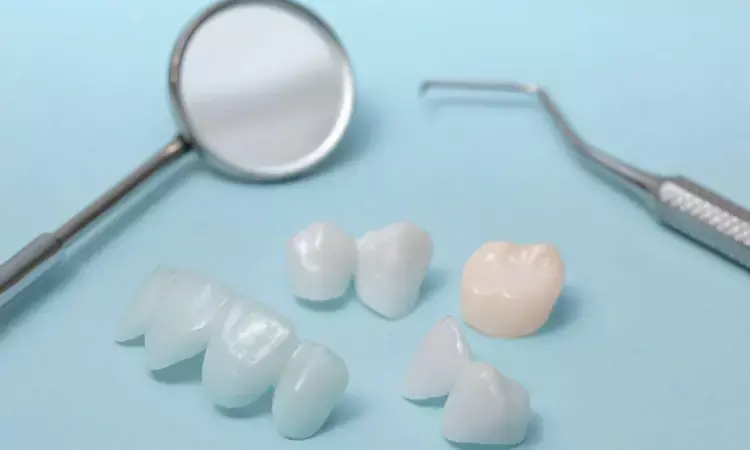- Home
- Medical news & Guidelines
- Anesthesiology
- Cardiology and CTVS
- Critical Care
- Dentistry
- Dermatology
- Diabetes and Endocrinology
- ENT
- Gastroenterology
- Medicine
- Nephrology
- Neurology
- Obstretics-Gynaecology
- Oncology
- Ophthalmology
- Orthopaedics
- Pediatrics-Neonatology
- Psychiatry
- Pulmonology
- Radiology
- Surgery
- Urology
- Laboratory Medicine
- Diet
- Nursing
- Paramedical
- Physiotherapy
- Health news
- Fact Check
- Bone Health Fact Check
- Brain Health Fact Check
- Cancer Related Fact Check
- Child Care Fact Check
- Dental and oral health fact check
- Diabetes and metabolic health fact check
- Diet and Nutrition Fact Check
- Eye and ENT Care Fact Check
- Fitness fact check
- Gut health fact check
- Heart health fact check
- Kidney health fact check
- Medical education fact check
- Men's health fact check
- Respiratory fact check
- Skin and hair care fact check
- Vaccine and Immunization fact check
- Women's health fact check
- AYUSH
- State News
- Andaman and Nicobar Islands
- Andhra Pradesh
- Arunachal Pradesh
- Assam
- Bihar
- Chandigarh
- Chattisgarh
- Dadra and Nagar Haveli
- Daman and Diu
- Delhi
- Goa
- Gujarat
- Haryana
- Himachal Pradesh
- Jammu & Kashmir
- Jharkhand
- Karnataka
- Kerala
- Ladakh
- Lakshadweep
- Madhya Pradesh
- Maharashtra
- Manipur
- Meghalaya
- Mizoram
- Nagaland
- Odisha
- Puducherry
- Punjab
- Rajasthan
- Sikkim
- Tamil Nadu
- Telangana
- Tripura
- Uttar Pradesh
- Uttrakhand
- West Bengal
- Medical Education
- Industry
Cerium oxide can be used as CMP paste to create smooth surface after adjustment of dental restorations

Thailand: Polishing lithium disilicate with ceria polishing paste generates a significantly smoother surface compared with the baseline roughness because ceria particles have a mechanical action and chemical reaction with silica on the lithium disilicate surface, a recent study has revealed. Therefore, it can be used as a chemical–mechanical polishing (CMP) paste to create a smooth surface.
Polishing is a process of wear on the surface of one material by another to produce a smooth surface. The process is required to restore a smooth surface after adjustment of dental restorations. An inadequately polished surface can reduce the restoration strength and esthetics. The current modalities used in dentistry are mechanically based. However, a polishing process called chemical–mechanical polishing combines a mechanical and chemical reaction.
The CMP model originated from glass polishing which used cerium oxide as an abrasive. It is considered the most effective abrasive for polishing glass.
All-ceramic restorations are used widely in dentistry owing to their esthetic appearance. One of these materials is lithium disilicate glass-ceramic (Li2Si2O5 or 2SiO2–Li2O) which comprises 57 to 80% silica as the main component. Because silica is the main component of glass and lithium disilicate glass-ceramic, Suparaksa Yamockul and Niyom Thamrongananskul from Chulalongkorn University in Bangkok, Thailand, hypothesized that CeO2 (cerium oxide; ceria) would react with the silica in lithium disilicate glass-ceramic, and thus could be used as a CMP agent.
In their study published in the European Journal of Dentistry, the investigators evaluated the CMP effects of CeO2 as an abrasive to polish lithium disilicate glass ceramic, and determined if silica would absorb CeO2. The null hypothesis was that there would be no significant difference in the surface roughness (Ra) of lithium disilicate before and after polishing with ceria polishing paste. There would be no significant difference in silica concentration before and after the addition of ceria particles in the solution.
For the polishing experiment, the researchers prepared 22 lithium disilicate glass-ceramic samples that were then polished with sandpaper using a polishing machine. A profilometer was used to measure their surface roughness, and they were randomly categorized into two groups (n=10).
The samples were polished with ceria paste for 30 seconds with different ratios of deionized water: ceria by weight: 1:0.5 (C0.5) and 1:1 (C1) according to their group; Ra values were determined. Ra was measured again after an additional 30 seconds of polishing until 120 seconds of polishing had been performed. The surface images were obtained of the postpolishing (120 seconds) samples to evaluate the surface morphology.
For the adsorption experiment, the preparation of 10 lithium disilicate glass-ceramic specimens was done and soaked in 50 mL of deionized water. The specimens were obtained after 24 hours. Each liquid sample was divided into two halves. The first half was stored and in the second half, cerial particles were added. Solutions were filtered after 24 hours. The silicon concentration in the liquid samples was analyzed.
Key findings:
- Ra decreased as the ratio of ceria and polishing time increased.
- The surface morphology of the samples analyzed by SEM corresponded with their Ra values.
- There was a significant decrease in the mean silicon concentration after adding ceria particles.
"CeO2 has a mechanical action and chemical reaction with lithium disilicate glass-ceramic and, therefore, can be used as a CMP paste to create a smooth surface," the researchers concluded.
Reference:
Yamockul S, Thamrongananskul N. Cerium Oxide Polishes Lithium Disilicate Glass Ceramic via a Chemical-Mechanical Process. Eur J Dent. 2023 Jul;17(3):720-726. doi: 10.1055/s-0042-1753457. Epub 2022 Sep 5. PMID: 36063846; PMCID: PMC10569834.
Dr Kamal Kant Kohli-MBBS, DTCD- a chest specialist with more than 30 years of practice and a flair for writing clinical articles, Dr Kamal Kant Kohli joined Medical Dialogues as a Chief Editor of Medical News. Besides writing articles, as an editor, he proofreads and verifies all the medical content published on Medical Dialogues including those coming from journals, studies,medical conferences,guidelines etc. Email: drkohli@medicaldialogues.in. Contact no. 011-43720751


